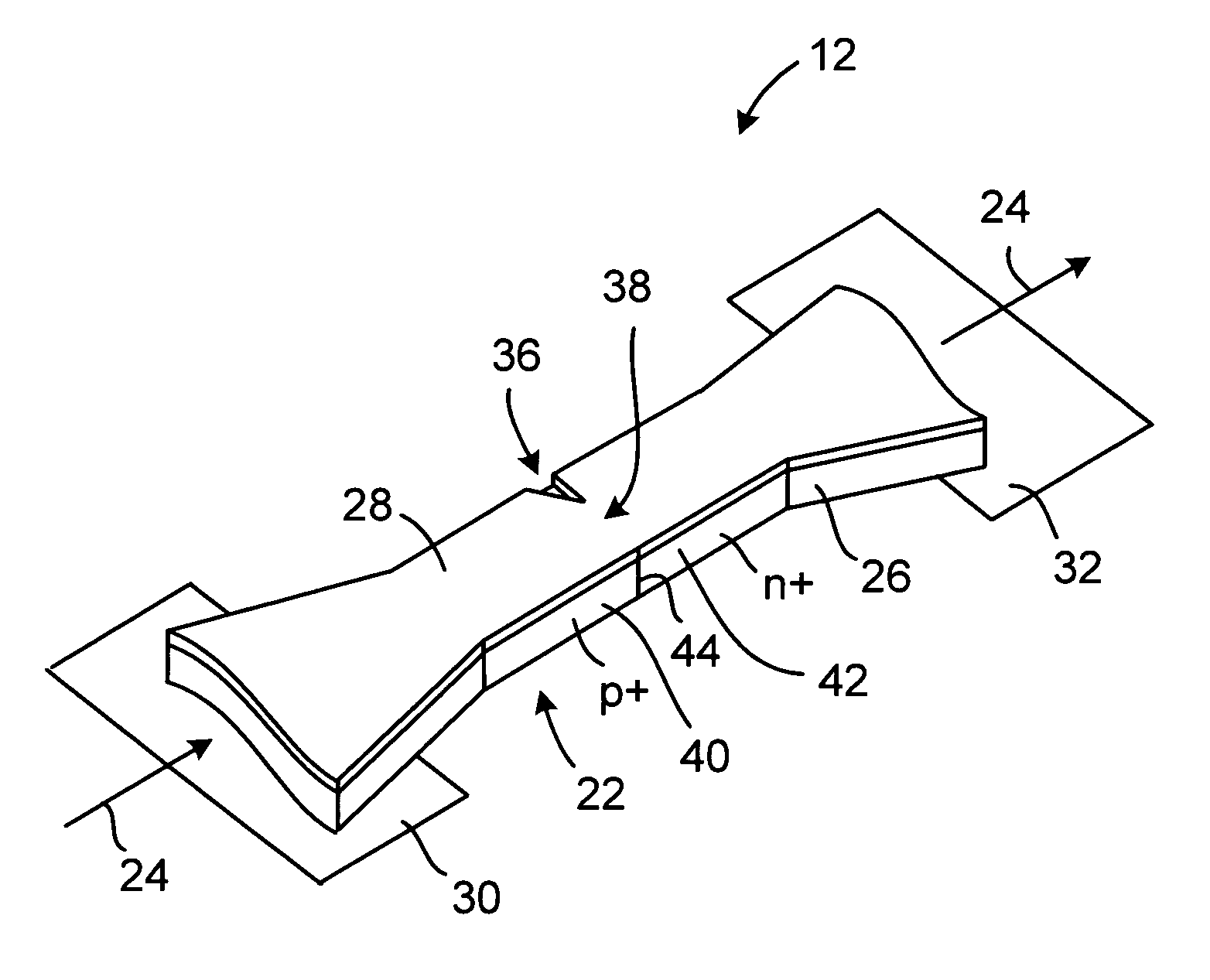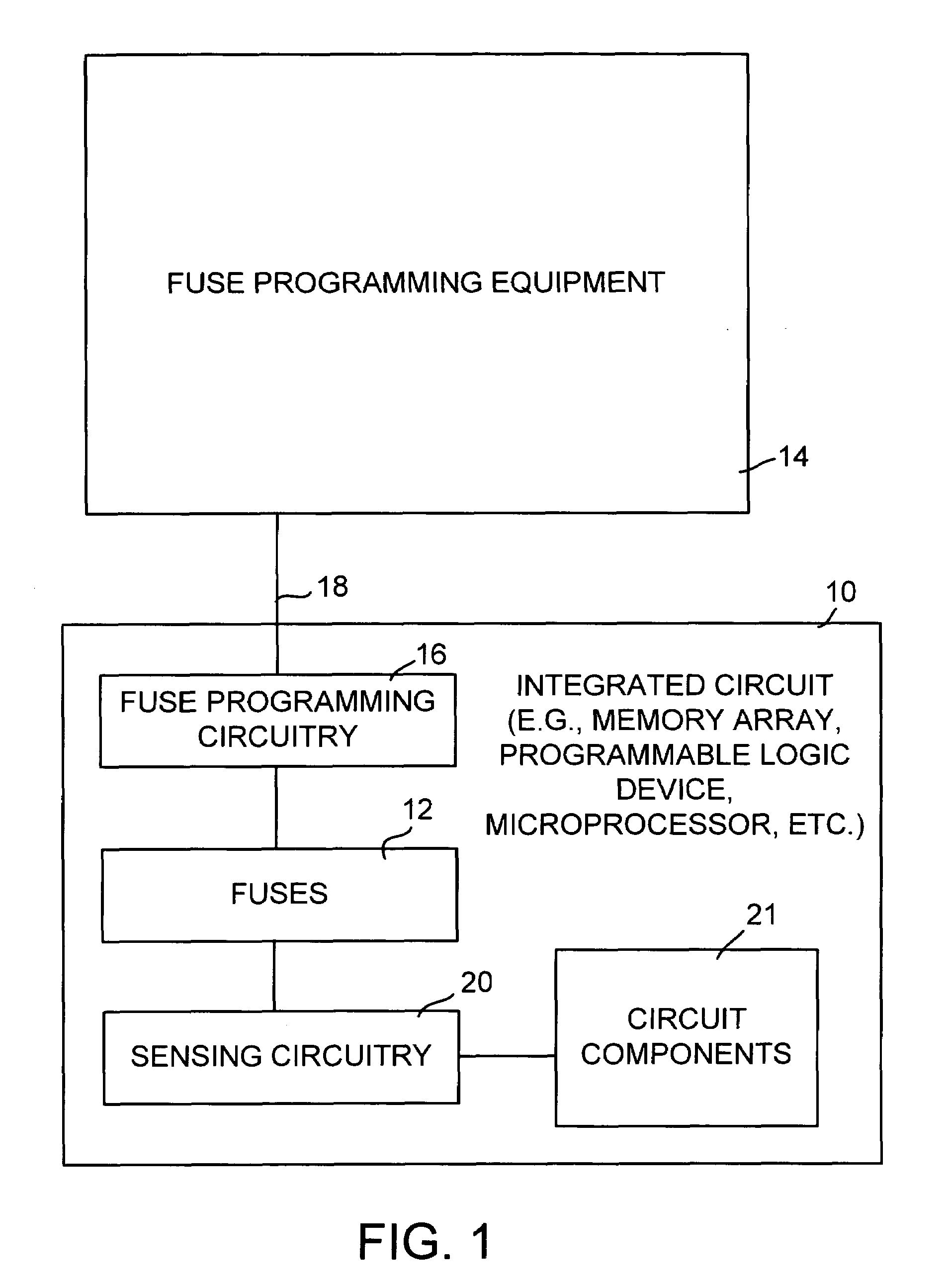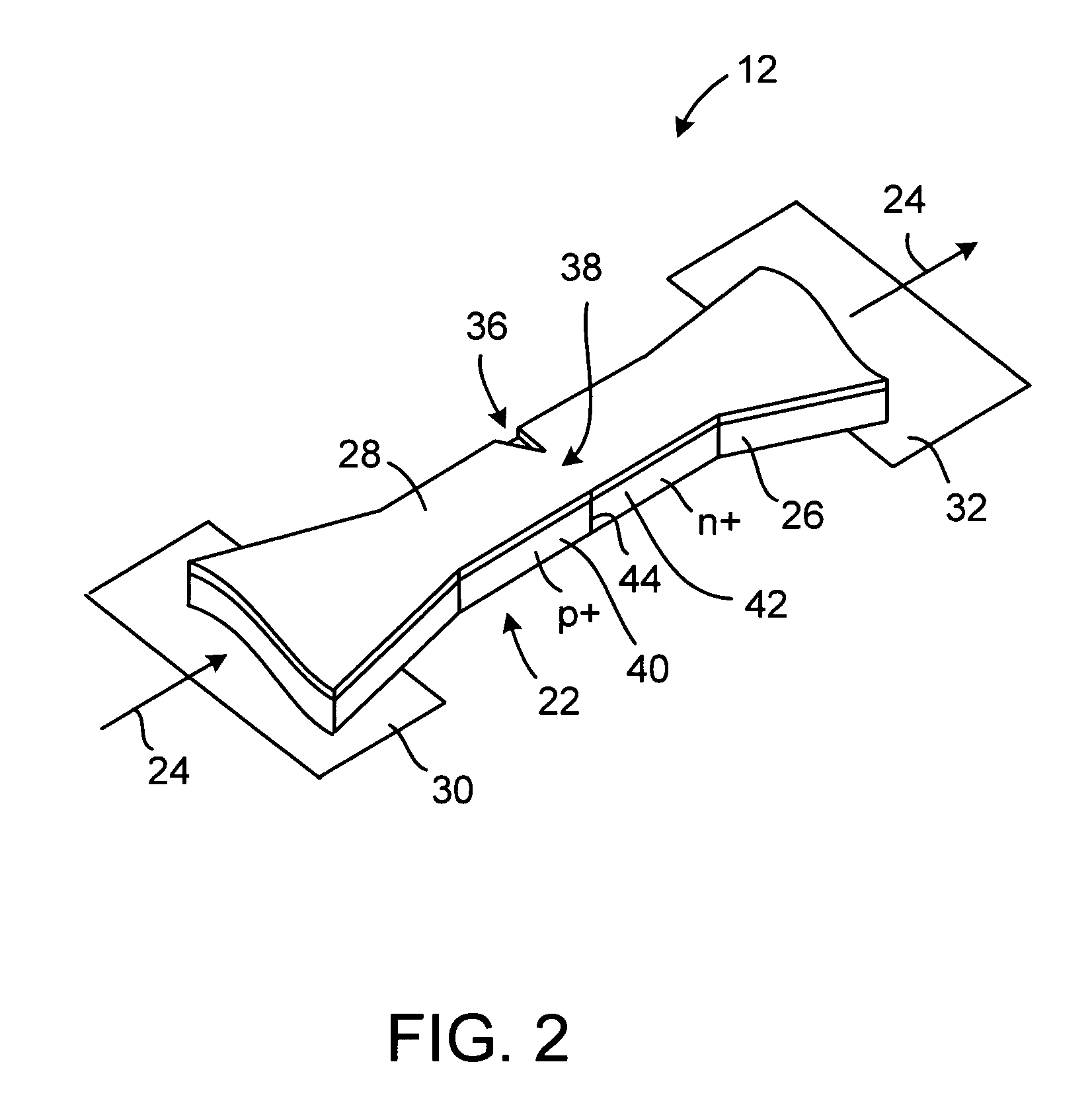Electrically-programmable integrated circuit fuses and sensing circuits
- Summary
- Abstract
- Description
- Claims
- Application Information
AI Technical Summary
Benefits of technology
Problems solved by technology
Method used
Image
Examples
Embodiment Construction
[0036]The present invention relates to integrated circuits having programmable fuse circuitry. The invention also relates to programmable fuses and sensing circuitry for sensing the states of the fuses.
[0037]Electrically-programmable fuses are used in a variety of integrated circuits. For example, electrically-programmable fuses may be used to configure the logic of a programmable logic device. Electrically-programmable fuses may also be used to implement redundancy schemes or to set the values of adjustable resistors or other circuit components. If desired, electrically-programmable fuses may be used for non-volatile information storage (e.g., to store a serial number or other information on a chip).
[0038]An illustrative integrated circuit 10 containing electrically-programmable fuses 12 is shown in FIG. 1. Integrated circuit 10 may be any suitable integrated circuit, such as an application-specific integrated circuit, a programmable logic device, a microprocessor, a digital signal...
PUM
 Login to View More
Login to View More Abstract
Description
Claims
Application Information
 Login to View More
Login to View More - Generate Ideas
- Intellectual Property
- Life Sciences
- Materials
- Tech Scout
- Unparalleled Data Quality
- Higher Quality Content
- 60% Fewer Hallucinations
Browse by: Latest US Patents, China's latest patents, Technical Efficacy Thesaurus, Application Domain, Technology Topic, Popular Technical Reports.
© 2025 PatSnap. All rights reserved.Legal|Privacy policy|Modern Slavery Act Transparency Statement|Sitemap|About US| Contact US: help@patsnap.com



